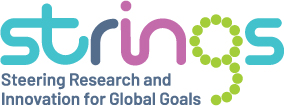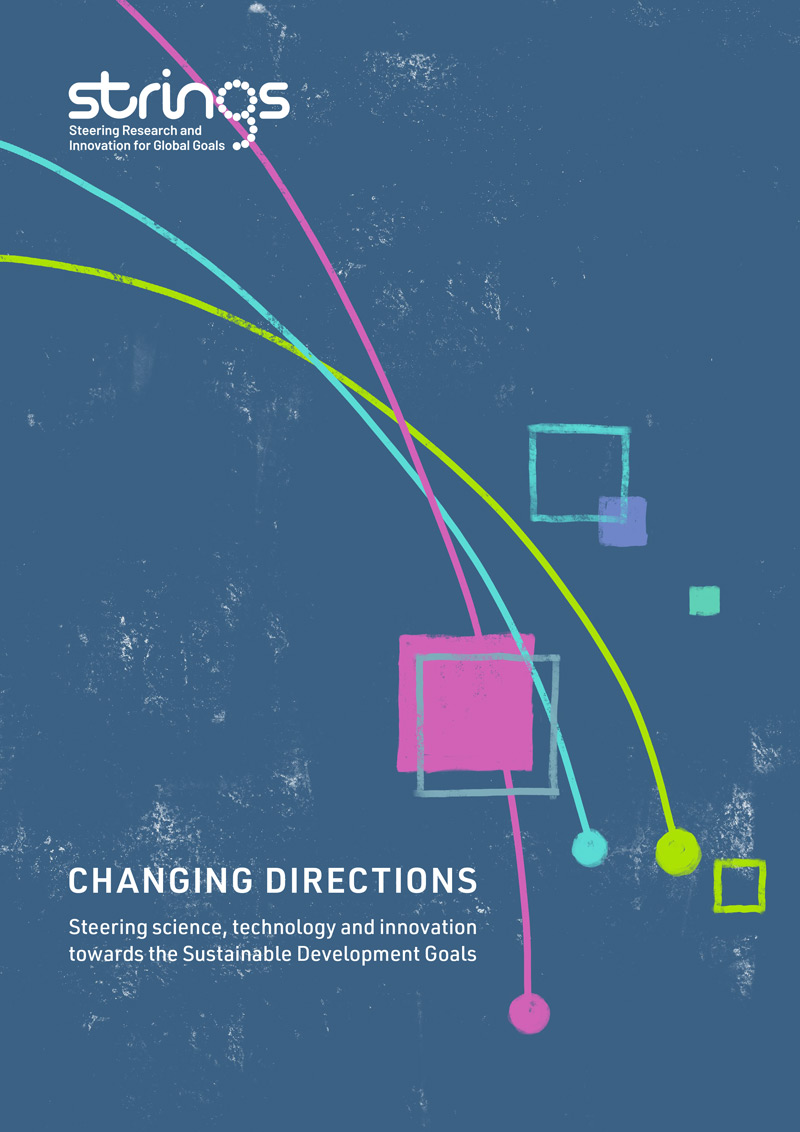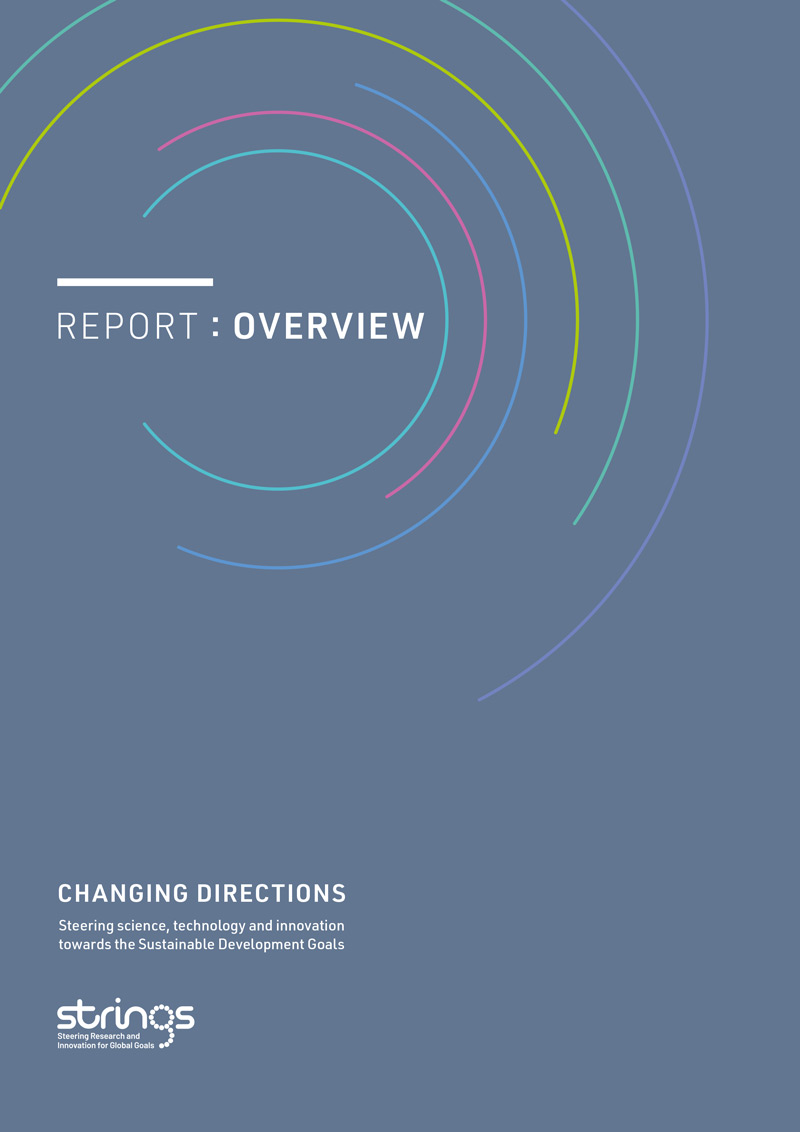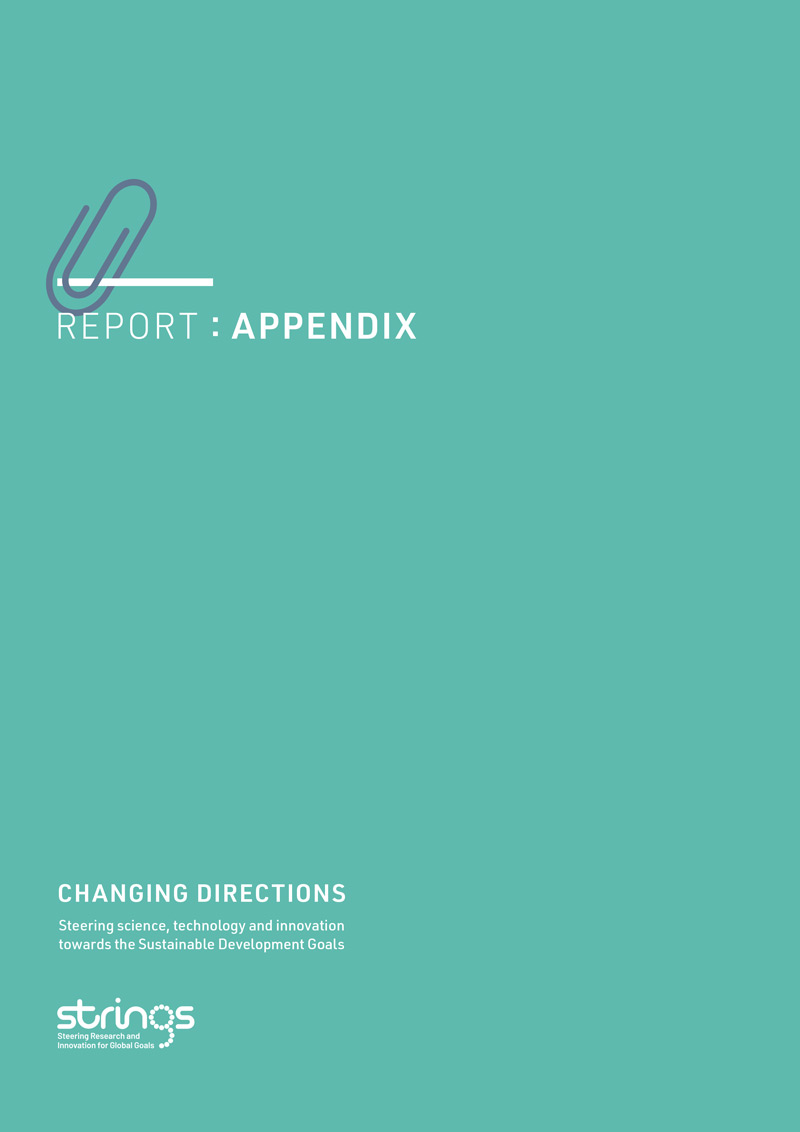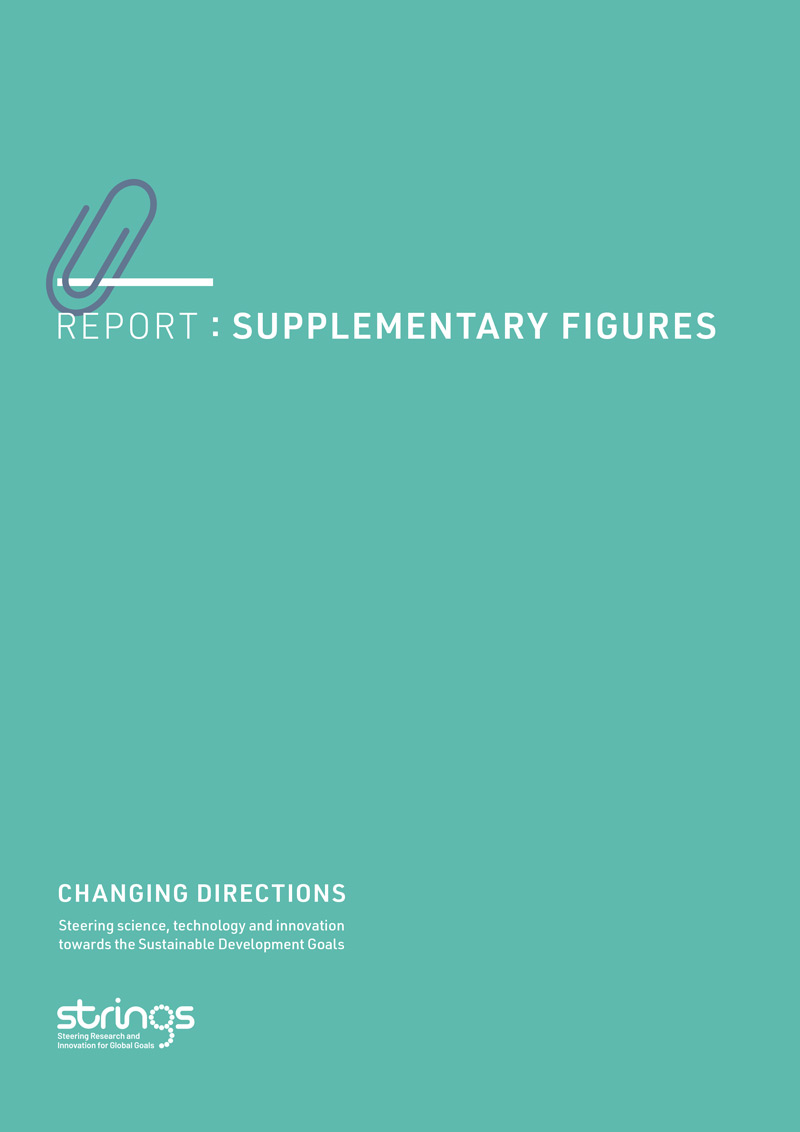Final report of STRINGS project published
The final report: ‘Changing Directions: Steering science, technology and innovation towards the Sustainable Development Goals’ was published on 20 October 2022.
Science, technology and innovation are failing to address the world’s most urgent sustainability challenges, according to a major new report from the STRINGS project.
‘Changing Directions: Steering science, technology and innovation towards the Sustainable Development Goals’ presents the results of the Steering Research and Innovation for Global Goals (STRINGS) project – a major global study into the alignment between science, technology and innovation (STI) and the Sustainable Development Goals (SDGs). It highlights a glaring mismatch between STI and the SDGs; warns that, if this mismatch is not addressed, it will undermine progress on the SDGs; and makes recommendations about how to tackle this imbalance.
DOWNLOAD REPORT BELOW
DOWNLOAD INDIVIDUAL CHAPTERS
Download Chapter 1 – Andy Stirling, Joanna Chataway, Tommaso Ciarli, and Pedro Conceição, “Aligning STI with the SDGs: An overview of the complex challenges”
Download Chapter 2 – Hugo Confraria, Agustina Colonna, Ine Steenmans and Andy Stirling, “A review of existing literature: Academic and policy discussions on STI-SDG relations”
Download Chapter 3 – Tommaso Ciarli and Ine Steenmans, “An overview of the research design: Combining analytical angles, methods and disciplines to investigate STI-SDG relations”
Download Chapter 4 – Tommaso Ciarli, Hugo Confraria, Ed Noyons, Ismael Ràfols and Alfredo Yegros, “A global map of science: Mapping and characterizing SDG-related research across the world”
Download Chapter 5 – Alfredo Yegros and Tommaso Ciarli, “A global map of technological inventions: Mapping and characterizing SDG-related patent activity across the world”
Download Chapter 6 – Hugo Confraria, Tommaso Ciarli, Ed Noyons and Ismael Ràfols, “STI-SDG alignment across countries: How research priorities relate to countries’ SDG challenges”
Download Chapter 7 – Ine Steenmans, Alaa Aldoh, Hugo Confraria, Tommaso Ciarli and Agustina Colonna, “Future STI priorities: Stakeholders’ views on how science, technology and innovation can help achieve the SDGs”
Download Chapter 8 – Saurabh Arora, Valeria Arza, Agustina Colonna, Paul N Kombo, Nimisha Mittal, John Ouma-Mugabe and Rasheed Sulaiman V, “Alternative STI pathways: Three case studies of local STI pathways in Argentina, India and Kenya”
Download Chapter 9 – Saurabh Arora, Valeria Arza, Julian Asinsten, Paul N Kombo, Nimisha Mittal, John Ouma-Mugabe, Nora Ndege, Bhuvana N and Rasheed Sulaiman V, “Misalignments between pathways and SDGs: Exploring plural views on how different STI pathways can address SDG challenges”
Download Chapter 10 – Andy Stirling and Saurabh Arora, “Diversity and plurality: Strategies to address complexities in aligning STI and the SDGs”
Download Chapter 11 – Geoff Mulgan, “Options for global governance: How global governance could help align STI and the SDGs”
Download Chapter 12 – Ismael Rafols, Ed Noyons, Tommaso Ciarli, Hugo Confraria and Alfredo Yegros, “Making use of STI mappings: Empowering stakeholders to select the relevant STI for SDGs”
Download Chapter 13 – Joanna Chataway, Tommaso Ciarli, Saurabh Arora, Ine Steenmans, Jacob Assa, Valeria Arza, John Ouma-Mugabe, Rasheed Sulaiman V, Nimisha Mittal and Hugo Confraria: “Areas for policy action: Recommended interventions to address misalignments between STI and the SDGs”
STRINGS SDGs Mapping Tool
This website presents a tool for mapping research to SDGs, which was developed as part of the STRINGS project to analyse global research directions. The tool displays a list of research areas identified as potentially relevant to each SDG, according to two interpretations (strict or loose). Each research area is described by specific keywords and journals. We also list the number of publications in a research area as well as the proportion of potentially SDG related publications. The map locates the research areas according to their position in the global search landscape. Proximity indicates cognitive similarity between research areas.
As there is no consensus on the relationship between research and the SDGs, this mapping presents only one possible way to relate research to the SDGs. In fact, different mapping methods have been shown to produce significantly different results (Armitage et al.,2020). Therefore, we suggest this tool be used in an exploratory mode, for different stakeholders to interpret the research and its relevance to SDGs in different ways.
Click to find the link to the interactive visualization. For more details contact Ed Noyons or Ismael Rafols.
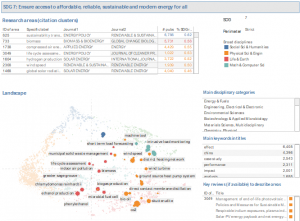
Example of the STRINGS Mapping Tool
For further reference to the SDG mapping tool please see: Rafols I, Noyons E, Confraria H, Ciarli T, (2021). Visualising plural mappings of science for Sustainable Development Goals (SDGs).
List of Related Publications
Arza V, Colonna A, (2021). Exploring the Links Between Research Demand and Supply: The Case of Chagas. SSRN Electronic Journal
Beck S, Jasanoff S, Stirling A, Polzin C, (2021). The governance of sociotechnical transformations to sustainability. Current Opinion in Environmental Sustainability
Ciarli, T, Confraria H, Rafols I, Chataway J., Stirling A.. (2021). Research Priorities May Not Align with the SDGs: Policy Suggestions to Steer Them. In IATT, Emerging Science, Frontier Technologies, and the SDGs – Perspectives from the UN System and Science and Technology Communities. (pp. 90-98). New York: United Nations Interagency Task Team on Science, Technology and Innovation for the Sustainable Development Goals
Coburn J, Bone F, Hopkins M, Stirling A, Mestre-Ferrandiz J, Arapostathis S, Llewelyn M, (2021). Appraising research policy instrument mixes: a multicriteria mapping study in six European countries of diagnostic innovation to manage antimicrobial resistance.. Research policy, 50 (4), pp. 104140
Stirling (2021), “Preface: Branching pathways in agroecological transformations”, in C. Lamine, D. Magda, M. Rivera-Ferre, T. Marsden (eds), Agrocecological transitions, between determinist and open-ended visions, 23-32, Bruxelles: Peter Lang
Stoddard I, Anderson K, Capstick S, Carton W, Depledge J, Facer K, Gough C, Hache F, Hoolohan C, Hultman M, Hällström N, Kartha S, Klinsky S, Kuchler M, Lövbrand E, Nasiritousi N, Newell P, Peters G, Sokona Y, Stirling A, Stilwell M, Spash C, Williams M, (2021). Three Decades of Climate Mitigation: Why Haven’t We Bent the Global Emissions Curve?. Annual Review of Environment and Resources
Van Dyck B, Kenis A, Stirling A, (2021). The genetically modified organism shall not be refused? Talking back to the technosciences. Environment and Planning E: Nature and Space
